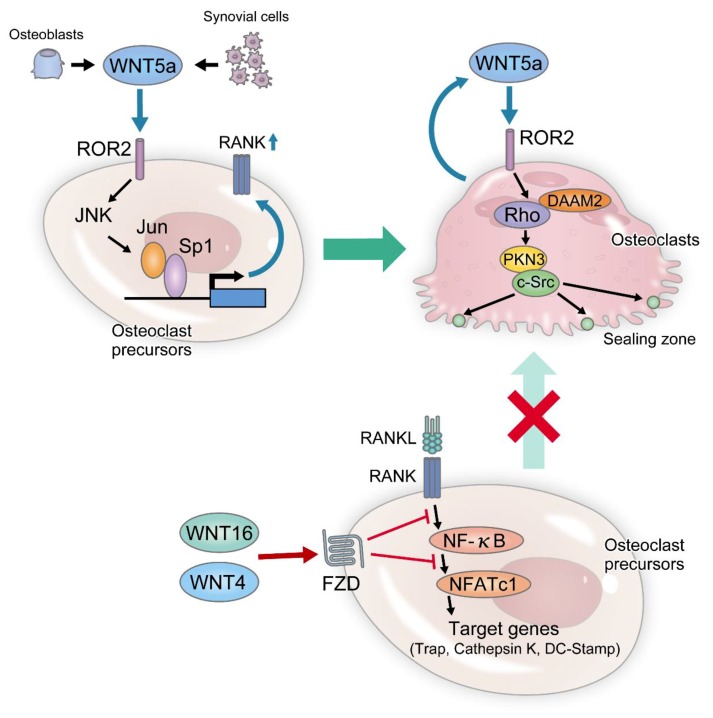Figure 4.
The roles of non-canonical Wnt pathways in osteoclast differentiation and function. Wnt5a-Ror2 signaling is crucial for osteoclastogenesis in both physiological and pathological conditions. In physiological bone remodeling, Wnt5a secreted from osteoblast-lineage cells binds Ror2 and activates JNK in osteoclast precursors, and in turn, c-Jun is recruited to Sp1 on the RANK promoter. This signaling enhances RANK expression in osteoclast precursors, thereby enhancing RANKL-induced osteoclastogenesis. In arthritis, synovial cells produce excess amounts of Wnt5a, which aggravates joint destruction. This pathway also activates Rho in an adapter protein Daam2-dependent manner. Subsequently, the Rho effector kinase Pkn3 binds to c-Src, which enhances the bone-resorbing activity through actin ring formation in mature osteoclasts. Wnt4 and Wnt16 are also secreted from osteoblasts and inhibit the RANKL-induced activation of NF-kB and NFATc1 signals, which in turn inhibit osteoclast differentiation. JNK: Jun N-terminal kinase, Daam2: dishevelled associated activator of morphogenesis, Pkn3: protein kinase N3.

